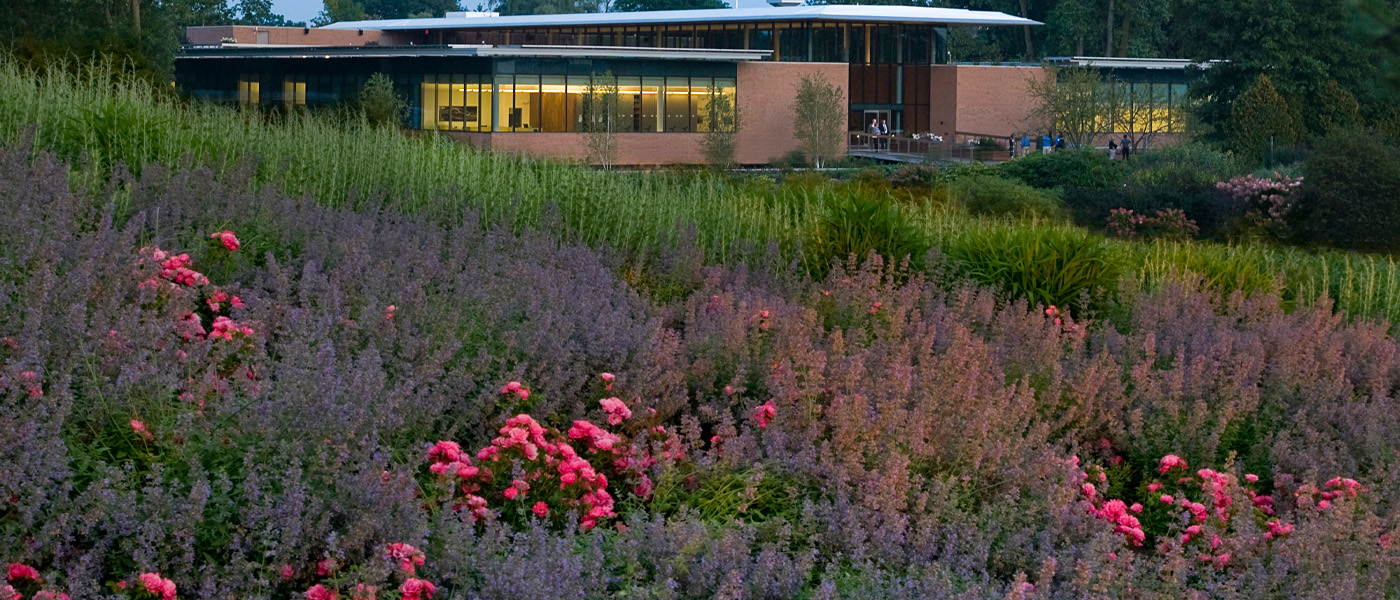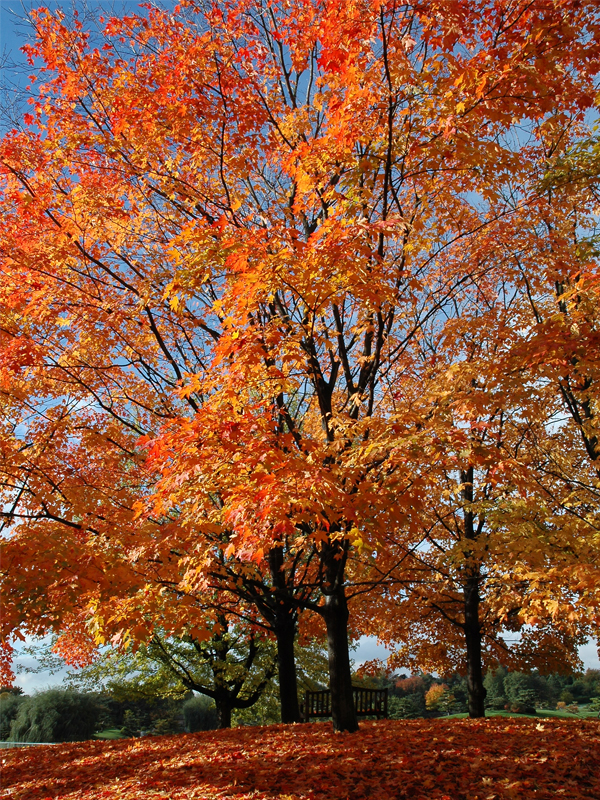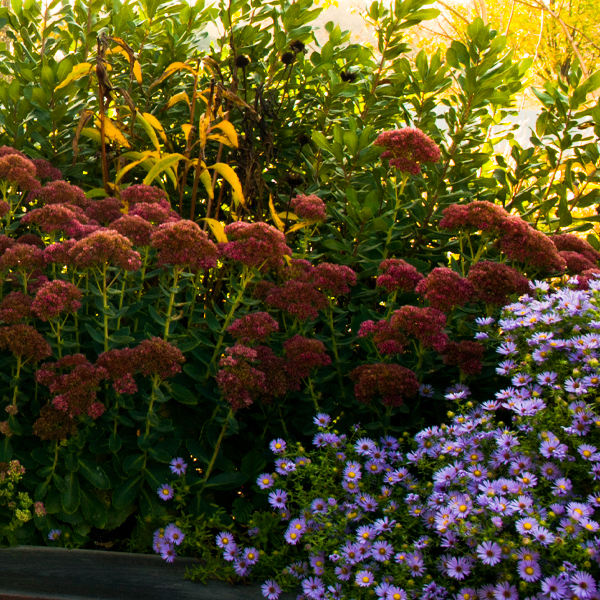Take a fall-color tree walk from the Visitor Center to the Daniel F. and Ada L. Rice Plant Conservation Science Center
While it is true that prime fall color occurs at the Garden during the first two weeks of October, it is also true that there is a nonstop fall show that spans a much longer period of time, late summer to late autumn, achieving a crescendo of color in those peak weeks of October. Just as they understand the fickle weather in our town, gardeners know better than to try to predict the date the Japanese maples will light on fire, or the moment the filigreed sumacs will be a perfect blend of orange, green, and red. Nature guards those secrets. We leaf-peepers can only watch in wonder.




The Perfect Ingredients for Fall Color
For maximum fall color, a tree must be healthy and well watered. It also needs an ideal combination of cool nights and sun-filled days, with a minimum of thunderstorms that often rip off the leaves before they are ready. Finally, the tree must possess a genetic coding that predisposes it to show color. If all these factors come together, we will have the show of shows this month.
October is truly a transitional time — with great abundance and harvest followed by drastic change. As the tall trees begin to color up, they compete for attention with all the brightly blooming perennials and annuals planted throughout the Garden. Walking the Garden at this time, one is struck by the overhead displays, the tapestry of bedding plants, the emerald green grass, and the blue October sky. Each tableau is unique, with plants seen in yet another light.
Begin Your Walk to the Plant Science Center
An ideal fall-color tree walk begins at the Visitor Center and proceeds south along the Garden's East Road on the way to the Daniel F. and Ada L. Rice Plant Science Conservation Science Center. Leave the Visitor Center and walk to the East Road, where you will see, on your left, the native trees, shrubs, and wildflowers of McDonald Woods. Here, an ongoing show of sequential color lasts well into late fall. Make a mental note that the stone and wood shelter, built in the manner of a Civilian Conservation Corps project, marks a good place for a future adventure and walk in the woods.
It's Color to the Right, Color to the Left
Look right, to the west, for a photographic view of the Garden's lakes, with Horaijima, the Island of Everlasting Happiness, in view. This third island in the three-island chain comprising the Elizabeth Hubert Malott Japanese Garden is the one island where you will see plants, but no people. It is there to symbolize paradise, a state unattainable by human beings. In the distance, surrounding the Waterfall Garden, standing tall on the horizon, are giant maples ablaze in green and orange. Closer to you on the path, don't miss the bright red sour gums, quick to change once cool nights prevail.
On the eastern or left-hand side of the road is a grouping of oaks and unusual Chinese pear trees (Pyrus ussuriensis), which, like many of the ornamental pears, demonstrate good late-fall color. As the Waterfall Garden comes clearly into view, so do the baldcypress, dawn redwood, and larch trees — whose feathery foliage turns to burnished gold. These trees are deciduous conifers, cone-bearing trees that shed their needlelike leaves in fall.
Looking through to the heavily pruned and trained trees of the Malott Japanese Garden, you can pick out the changing azaleas, ornamental crabapples, Japanese maples, and weeping willows amid the manicured green lawns of the islands. Closer in sight are Fall Fiesta sugar maples, which display some of the strongest orange and red color of the season.
Arrive at the Plant Science Center
This approach to the Plant Science Center reveals installations of Exclamation!™ London planetree (note the patchwork bark!), serviceberry (terra cotta is the perfect word to describe their fall color), hackberry, Wildfire sour gum, and Green Mountain sugar maple. Additional highlights guaranteed to light sparks include Avalanche crabapples and Somerset red maples.
Many future walks await, all with their own colorful charms.
For now, savor the beauty that fall brings and the joys of being outside in the natural world.

